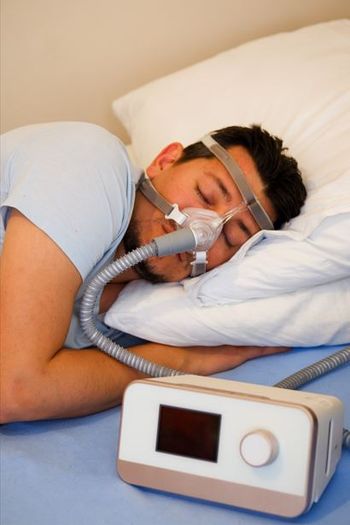
Multidetector CT Angiography Promising for Brain Aneurysm
DUISBURG, Germany -- Multidetector CT angiography can diagnose and assess intracranial aneurysms with equivalent accuracy to digital subtraction angiography, investigators here reported.
DUISBURG, Germany, July 31 -- Multidetector CT angiography can diagnose and assess intracranial aneurysms with equivalent accuracy to digital subtraction angiography, investigators here reported.
Compared with DSA, the investigators found that multidetector CTA had a sensitivity of 98% and a specificity of 100% for detecting brain aneurysms, according to an article in the August issue of Radiology. In addition, multidetector CTA predicted the feasibility of endovascular treatment with 94% sensitivity and 92% specificity.
"We conclude that multidetector CT angiography? can be used as the first step in the diagnostic workup of patients with subarachnoid hemorrhage," said Karsten Papke, M.D., of the Duisburg Clinic, and colleagues.
If multidetector CTA identifies a ruptured aneurysm, a diagnostic DSA can be avoided. However, if multidetector CTA imaging is negative, DSA remains necessary to rule out an aneurysm that might have been missed by CT, they added.
Although selective DSA remains the method of choice for diagnosis of intracranial aneurysms, the modality has some inherent disadvantages. The role of CTA in evaluating brain aneurysm continues to expand, but technical limitations may limit its diagnostic accuracy.
Yet multidetector CTA might overcome some of the limitations of conventional CTA. For example, Dr. Papke and colleagues noted, multidetector CTA offers faster imaging of larger volumes with increased spatial resolution.
The investigators evaluated multidetector CTA's accuracy for imaging brain aneurysms in 94 patients with suspected subarachnoid hemorrhage and evaluating the patients' suitability for endovascular treatment. All patients underwent multidetector CTA and intra-arterial DSA.
Multidetector CTA revealed 88 aneurysms in 67 patients, and produced no evidence of aneurysms in the remaining 27 patients. Seven patients were excluded from evaluation. There were two who did not have DSA because of poor clinical condition, three who had surgical clip placement without DSA, and two who did not have DSA because clinical findings supported negative CTA.
Complete diagnostic workup that included imaging and clinical data revealed 84 aneurysms in 63 patients. Multidetector CTA correctly identified 62 of the 63 patients and 80 of 84 aneurysms and correctly ruled out aneurysms in 24 patients. DSA identified 62 of 63 patients with 79 of the 84 aneurysms and ruled out aneurysms in 23.
Multidetector CTA and DSA achieved identical sensitivity and specificity. Additionally, multidetector CTA had a positive predictive value of 100% and negative predictive value of 96% compared with 98% and 96% for DSA.
For each patient with a ruptured aneurysm on multidetector CTA, the same CTA data were used to determine whether the aneurysm should be treated by endovascular coil placement or by neurosurgery. The results were compared with actual treatment that occurred after complete diagnostic workup. Multidetector CTA correctly indicated the feasibility of coil placement in 69 of 74 aneurysms that were treated by acute occlusion.
"Our results demonstrate that the diagnostic performance of multidetector CT angiography is comparable to that of DSA," the authors concluded. "Furthermore, morphologic changes in aneurysms can be depicted precisely enough to enable identification of aneurysms that can be treated with coil embolization."
The authors pointed out a limitation of the study which prevented direct comparison of the two methods.
"Concerning the comparison between multidetector CT angiography and DSA with respect to aneurysm detection, a limitation of our study was that DSA was performed with knowledge of the multidetector CT angiography results," they wrote. "Thus, the DSA results reflect the combination of both modalities in most cases, and the diagnostic performance of DSA compared with that of multidetector CT angiography subsequently may have been overestimated in our study,.
Newsletter
Enhance your clinical practice with the Patient Care newsletter, offering the latest evidence-based guidelines, diagnostic insights, and treatment strategies for primary care physicians.



















































































































































































































































































